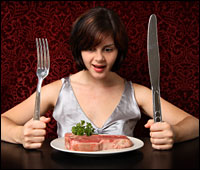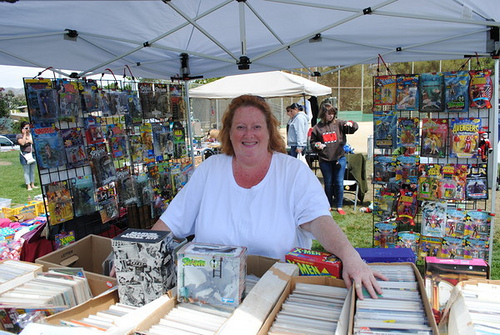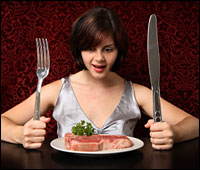
Yum?
The Guardian reports on two competing efforts to generate lab-grown meat — all of the tastiness, none of the nastiness. The intent isn’t to make a niche product for vegans, but to formulate something that’s indistinguishable from real meat — and to thereby end meat production as we know it.
Winston Churchill actually predicted the rise of this industry in 1932, saying, “Fifty years hence, we shall escape the absurdity of growing a whole chicken in order to eat the breast or wing, by growing these parts separately under a suitable medium.” He was off by a few decades, but scientists and entrepreneurs are working hard to make up for lost time.
Mark Post heads up a Dutch team that’s trying to grow animal muscle tissue without the animal — sometimes called in-vitro meat, or shmeat:
Post envisages a future where huge quantities of high-quality meat are gown in vats, incorporating not only muscle fibres but layers of real fat and even synthetic bone. “In 25 years,” he says, “real meat will come in a packet labelled, ‘An animal has suffered in the production of this product’ and it will carry a big eco tax. I think in 50-60 years it may be forbidden to grow meat from livestock.”
An animal does need to be killed to kick off the in-vitro process, but “in theory, a single specimen could provide the seed material for hundreds of tonnes of meat.” The process of making shmeat is not yet cost effective, however. A single burger made with the stuff will be served for the first time this October and will cost an estimated $331,000 to make.
In a separate effort, Patrick Brown leads a secretive, well-funded Silicon Valley startup, Sand Hill Foods, that’s working to develop synthesized meat and dairy products. His approach is “to manipulate plant material to create a meat-facsimile” — no animals involved at all.
If either venture succeeds, the meat industry will be on the defensive.
This is a disruptive technology — one that threatens to overturn a powerful and established order. The global meat industry, which is populated by some very ruthless people, is going to fight this hard. “I think the meat industry will be an adversary, and maybe a dangerous one,” Post says.
Another challenge will be overcoming the “yuck” factor. But today’s meat eaters already avert their eyes from the factory farms and other unsavory systems that currently bring meat to our tables, so will eating meat from a lab really be that much of a stretch? As reporter Michael Hanlon puts it, “In terms of yuckiness, real meat is at the top of the scale.”



